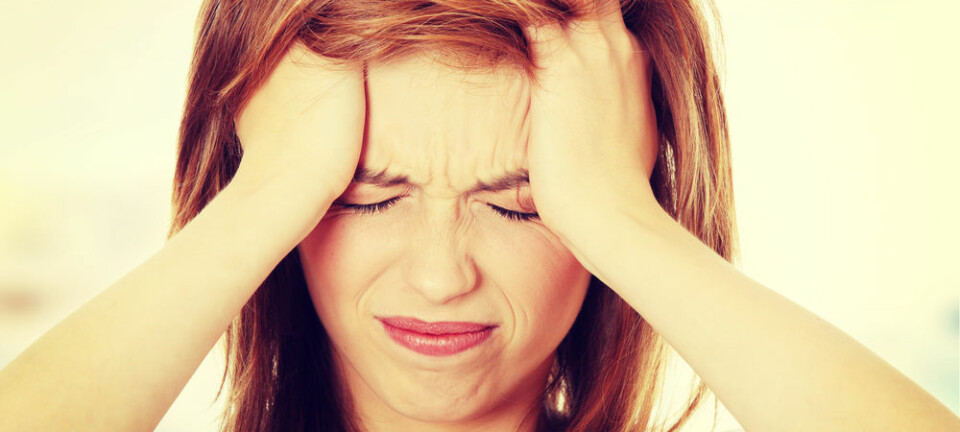An article from Norwegian SciTech News at NTNU

One-quarter of teens have migraines
Most teens say that classroom noise, tiredness, and poor ventilation are the reason for their problems. Mostly girls are affected.
Most teenagers, however, have not reported their headaches to the Norwegian National Health Service.
“The numbers are very large,” says Anne Berit Krogh, PhD candidate at the Department of Neuroscience at NTNU in Norway. She has spent a year interviewing 488 teenagers between the ages of 12 and 18 at 13 schools about migraines and headaches.
Here are some of her findings about migraines:
- One-fourth of teenagers experience migraines of some kind.
- One-fourth of teenagers who experience migraines had episodes between one and three times a week.
- Most of these participants reported that episodes lasted between four and 24 hours.
- 93 per cent reported moderate to severe pain.
Here are some of her findings on headaches in general:
- The majority of teenagers experience some kind of headache.
- 88 per cent of teenagers who say they have headaches reported recurring complaints.
- One-fourth of teenagers who experience headaches have them between one and three days a month.
- 15 per cent have headaches between one and three days a week.
- Three per cent say that they have headaches every other day or more often. In this group the most common diagnosis was chronic migraines or chronic tension headaches.
One in four teenagers who have migraines experiences other types of headaches as well.
Leaving school to rest
Many teenagers alleviated their pain by going home from school and resting.
“Later in the day, they would still do homework or go to training,” Krogh says. “The clear impression I’ve gotten is that Norwegian teens are very impressive and very focused on working hard and doing well in school.”
Most get headaches at school
To find the right headache diagnosis, Krogh used international guidelines from the International Headache Society (ICHD-3 beta). This means that she wasn’t asking questions like “Do you get migraines?” but rather: “Do you have, or have you experienced headaches over the course of the last year?”, “How many times have you had this type of headache?”, or “When you have a headache, do you experience numbing in the corners of your mouth, and do you have pain only on one side of your head, or both?”
“Teenagers who experienced migraines often woke up to an episode in the morning, while other types of headaches would occur throughout the course of the day,” Krogh said.
Difference between old and new buildings
The main cause of pain for most participants was stress at school and classroom noise. Following this was tiredness and hunger. Bad classroom ventilation was in fourth place.
The schools included in the study are geographically located all over Trøndelag in central Norway, including both schools located centrally in Trondheim, as well as places like Røros, Orkdal and Frøya.
Some of the schools that Krogh visited had both new and old buildings. Her study shows that teenagers in the older buildings were much more likely to be troubled with headaches and migraines than those who had classes in newer buildings. This could be seen within distinct schools.
“I visited a school that had a very bad ventilation system. To get enough air in the classroom, they had to keep windows open, even during the winter, so the students just had to sit there, freezing in class,” she says.
Teenagers at schools such as the recently re-built Rosenborg High School in Trondheim, on the other hand, were much less likely to experience headaches and migraines.
-------------------------------------
Read the Norwegian version of this article at forskning.no


































